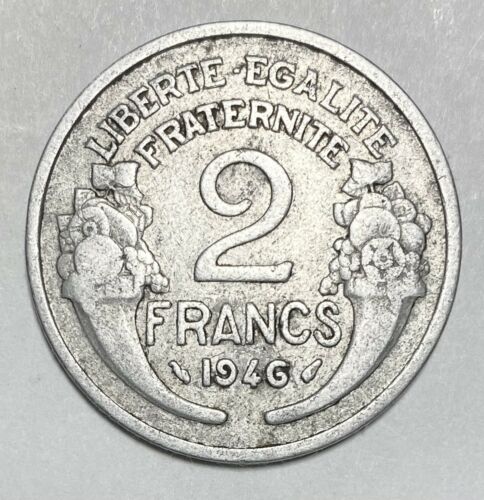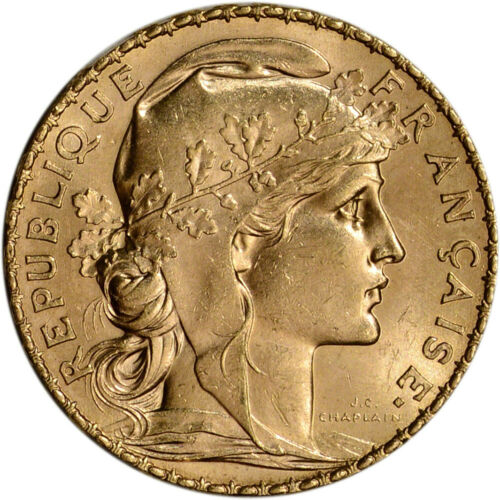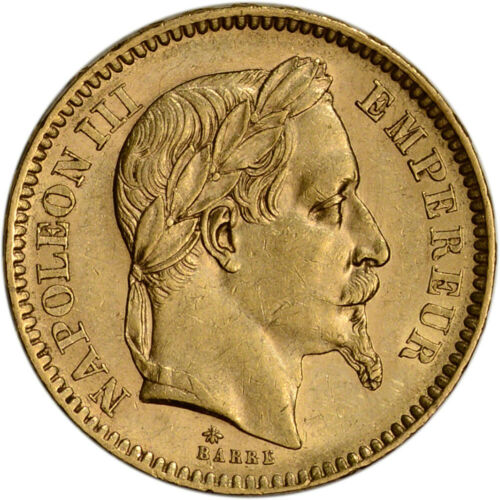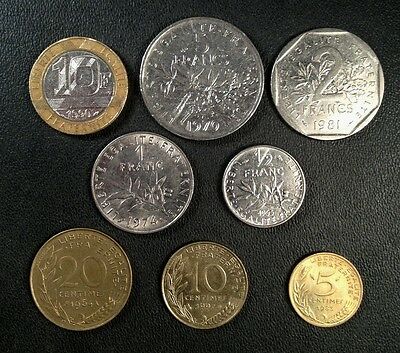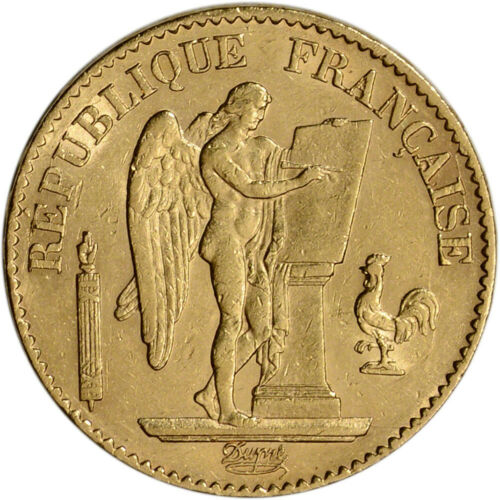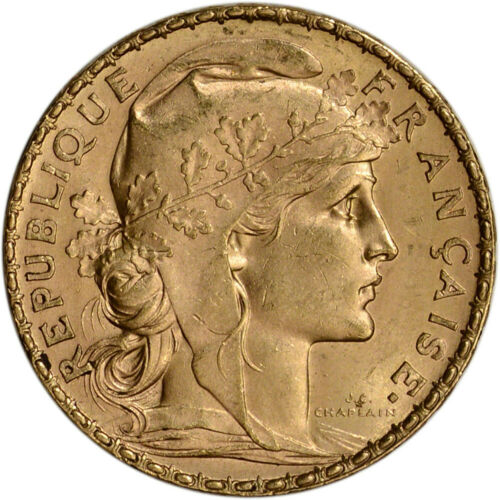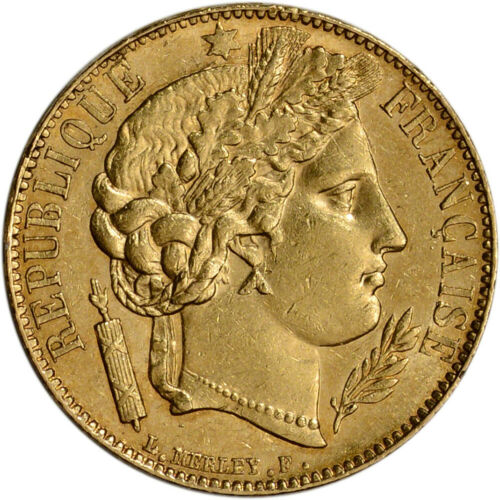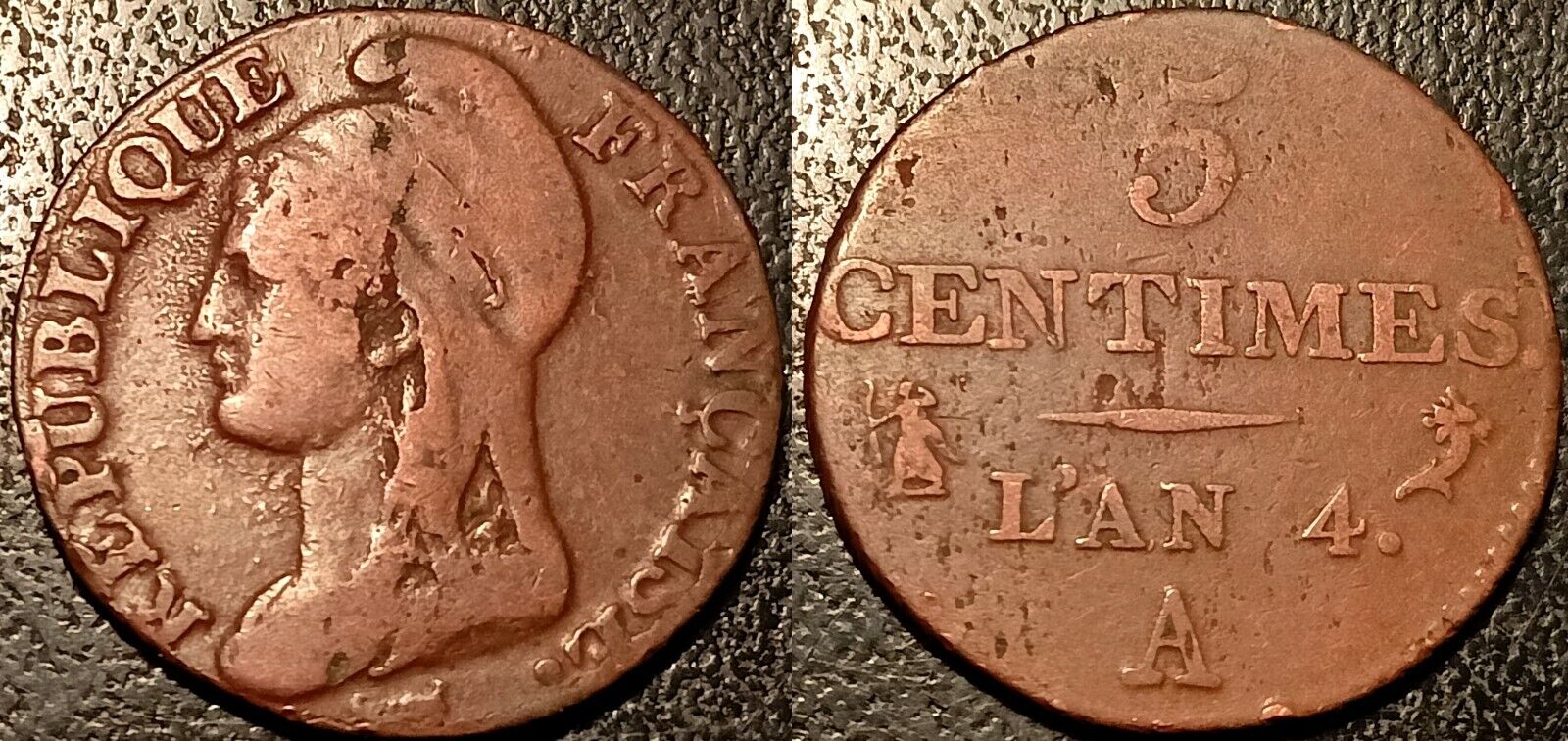-40%
1946 France 2 Franc Aluminum Circulated Coin (1063)
$ 1.55
- Description
- Size Guide
Description
1946 France 2 FrancCirculated Coin
I've got a lot of coins like this and lots of different coins in my store.
Please come check it out!!!
2 Francs
Not the coin for sale. Example Image.
Features
Country
France - Modern
Period
Fourth Republic (
1946-1958
)
Type
Standard circulation coin
Years
1941-1959
Value
2 Francs (2)
Currency
Franc (1795-1959)
Composition
Aluminium
Weight
2.2 g
Diameter
27 mm
Thickness
1.8 mm
Shape
Round
Orientation
Coin alignment ↑↓
Demonetized
02-17-2005
Obverse
Wreathed female head facing left, lettering around edge both sides, engraver's name behind head.
Lettering:
REPUBLIQUE FRANÇAISE
MORLON
Engraver:
Pierre-Alexandre Morlon
Reverse
A cornucopia on each side, lettering at top, value in middle with date below. Privy mark to right of date.
If there is a B or C Mintmark it is in the gap between the two bases, below date.
Lettering:
LIBERTE-EGALITE
FRATERNITE
2
FRANCS
1958
Engraver:
Pierre-Alexandre Morlon
Edge
Smooth
The
franc
(
/
f
r
æ
ŋ
k
/
;
French:
[fʁɑ̃]
;
sign
:
F
or
Fr
), also commonly distinguished as the
French franc
(
FF
), was a
currency
of
France
. Between 1360 and 1641, it was the name of coins worth 1
livre tournois
and it remained in common parlance as a term for this amount of money. It was reintroduced (in
decimal form
) in 1795. After two centuries of inflation, it was
revalued
in 1960, with each
new franc
(
NF
) being worth 100 old francs. The NF designation was continued for a few years before the currency returned to being simply the franc; some mostly older French continued to reference and value items in terms of the old franc (equivalent to the new
centime
) until the introduction of the
euro
in 1999 (for accounting purposes) and 2002 (for coins and banknotes). The French franc was a commonly held international
reserve currency
of reference in the 19th and 20th centuries.
In 1960, the new franc (
nouveau franc
) was introduced,
worth 100 old francs.
Stainless steel
1 and 5 centimes, aluminium-bronze 10, 20, and 50 centimes, nickel 1 franc and silver 5 francs were introduced. Silver 10-franc coins were introduced in 1965, followed by a new, smaller aluminium-bronze 5-centime and a smaller nickel
1
⁄
2
-franc coin in 1966.
A first attempt to introduce a nickel 2-franc coin in 1960 failed.
Nickel-clad copper-nickel 5-franc and nickel-brass 10-franc coins replaced their silver counterparts in 1970 and 1974, respectively. Nickel 2 francs were finally introduced in 1979, followed by bimetallic 10 francs in 1988 and trimetallic 20 francs in 1992. The 20-franc coin was composed of two rings and a centre plug.
A nickel 10-franc piece was issued in 1986, but was quickly withdrawn and demonetized due to confusion with the half-franc and an unpopular design. This led to the conception of the later bimetallic model. The aluminium-bronze pieces continued to circulate until the bimetallic pieces were developed and additional aluminium-bronze coins were minted to replace those initially withdrawn. Once the bimetallic coins were circulating and produced in necessary quantities, the aluminium-bronze pieces were gradually withdrawn and demonetized.
A .900 silver 50-franc piece was issued from 1974–1980, known as the largest silver coin ever minted in France, (due to its face value in accordance to its size) but was withdrawn and demonetized after the price of silver spiked in 1980. Then, in 1982, a 100-franc piece, also in .900 silver, was issued, and circulated to a small extent, until the introduction of the euro.
All French franc coins were demonetized in 2005 and are no longer redeemable at the
Banque de France
.
At the time of the complete changeover to the euro on 1 January 2002, coins in circulation (some produced as recently as 2000) were:
1 centime (~ 0.15 euro cents) stainless steel, rarely circulated (last production stopped first in 1982, then in 1987 due to high production cost, and lack of demand due to its very low value).
5 centimes (~ 0.76 cents) aluminium-bronze
10 centimes (~ 1.52 cents) aluminium-bronze
20 centimes (~ 3.05 cents) aluminium-bronze
1
⁄
2
franc (~ 7.6 cents) nickel
1 franc (~ 15.2 cents) nickel
2 francs (~ 30.5 cents) nickel
5 francs (~ 76 cents) nickel-clad copper-nickel
10 francs (~ €1.52) bimetallic
20 francs (~ €3.05) trimetallic, rarer (produced for a short period before the euro, the banknote equivalent was much more frequently used)
100 francs (~ €15.24) silver, rarely circulated (most often bought and offered as personal gifts, but rare in commercial transactions, now worth more than its face value).

